


Experiments with magnets and our surroundings
What is attracted to magnets?
Take a wand magnet and go around the house to see what will stick to it or feel like it is attracted to it. Keep a list of the items you tried, and if the attraction was strong, weak, or none. Then try to figure out why.
Metals ![]()
Try especially different types of metals, for example:
iron and
steel (nails, screws and nuts)
stainless
steel (special hardware, some kitchen sinks, most everyday
forks and spoons)
brass
(special screws, kick-plates on front doors)
zinc
(battery case)
copper
(old pennies, copper pipes)
bronze
(marine bell)
aluminum
(foil)
silver
(expensive silverware, some jewelry)
gold
(wedding rings, grandma's teeth)
mercury
(thermometer - no need to break the thermometer to do the test)
nickel
(some coins, US nickels are made of 75% copper!, try Canadian nickels)
tungsten
(filament in light bulb)
magnesium (from a science supply
store, used in a ribbon form for burning in air, or from a hardware store that
carries magnesium floats for working with concrete)
coins from several countries (try
Canada, England, China, Japan, Germany)
About the US coins, I know the following:
Before 1982, the penny was 95% copper. After that, it was changed to 2.6%
copper. It is mostly a zinc alloy with a copper coating.
The nickel is 75% copper.
The dime, quarter and half dollar is 91.67% copper.
The Susan B. Anthony dollar is 87.5% copper.
The new gold-colored dollar is 90% copper.
To learn more about some of these metals, check out the pendulum experiment.
Below is a photo showing some of these metals, and a photo showing copper balls. (I got the copper balls from at gift shop in the UP of Michigan, at Big Springs State Park, just north of Manistique.) The cylinder of titanium was from a jet engine exhaust system.

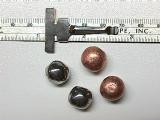

Minerals ![]()
Besides seeing what effect a strong magnet has on different metals, try and find out the effect it has on different minerals. A great source of minerals is found in the shops of most public, natural and science museums and in science shops or nature stores at malls. They usually have a stand with several different types of colorful minerals displayed; often the pieces are highly polished. They come with a small card describing the mineral, and cost about $1 per item.
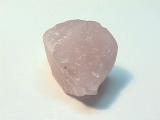
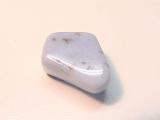
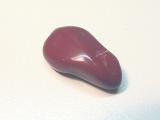
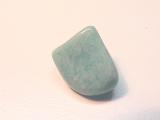
Rose quartz
Blue
lace
agate Jasper Chalcedony
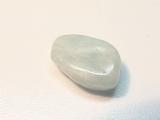
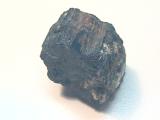
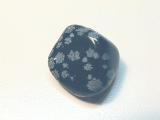
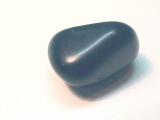
Sodalite
Tourmaline
Snowflake obsidian
Obsidian
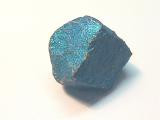
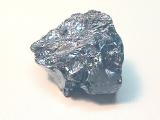
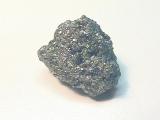
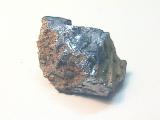
Bornite (Peacock ore)
Silicon
Pyrite
Galena
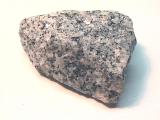
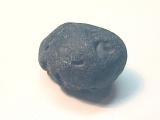
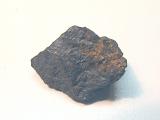

Quartz
Tektite
Lodestone
Hematite
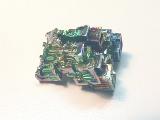
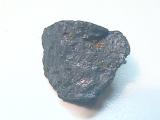
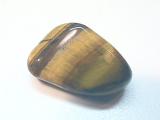
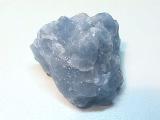
Bismuth
Lodestone
Tigereye
Blue calcite
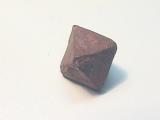
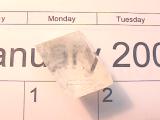
Magnetite
Iceland Spar (interesting optical properties)
In particular, try minerals with iron or nickel in them. An interesting science fair project would be to have several types of minerals on display along with a wand magnet. You can see which minerals are strongly attracted to the magnet (can be picked up by the magnet), which are slightly attracted to the magnet, and which are not attracted at all. Try to predict what category each would fall into.
Here are some minerals I know are strongly or slightly attracted to magnets:
Hematite
(This is usually the very shiny, black, heavy mineral found in the displays,
shown at the left in the first photo. Some jewelry is made of
hematite.)
Magnetite
(This may very likely be a weak magnet by itself! Remember, this was what
started the whole study of magnetism to begin with in ancient
Greece. This is seen in the fifth photo above.)
Lodestone (similar to magnetite, but without the cubic
crystalline form)
Franklinite
Chromite
Ilmenite
To make the project more colorful and interesting, I also have some silicon,
tektite, tourmaline, quartz, marble, tiger-eye, peacock ore, bismuth and others
minerals. Possible selection of minerals from Edmund 81-632.
Also check this site for more as a source for minerals and other interesting
links:
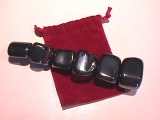
I found some magnetized stones that looked
like hematite but they would stick to each other! I was at Wonderworks
in Orlando, Florida when I spotted them. Now, hematite cannot be
permanently magnetized. So, how do they do that? They are actually
ferrite magnets that have been polished to look like hematite and then
magnetized. I had heard about spheres of these that would stick together
making a bracelet, too.
Ferrofluids ![]()
The area of ferrofluids is quite new, and very interesting. Ferrofluid is made of small particles (~10nm) of magnetite (Fe3O4) surrounded by a surfactant such as tetramethylammonium hydroxide. The surfactant is needed to keep the particles of magnetite from agglomerating (clumping together) due to magnetic and van der Waals interactions. It's like having a slippery skin around the small particle of magnetite. Thermal motion helps, but is not sufficient by itself. A group of these prepared particles is like a solution that acts like a medium density liquid which is affected by magnetic fields. When a magnet is brought near it, the liquid splits up and starts to group itself into spikes or hairs along the magnetic field lines as shown in the photos. It is used to seal rotating shafts, and in speakers to help dampen the vibrations of the speaker coil, and help cool the coil. Great stuff to play with!
Here are some photos of what you can do with a vial of ferrofluid
(I purchased the kit FF-100 from Educational
Innovations as well as the separate preform display cell FF-200 sitting in
front.) When storing the preform display cell, it is best to sit it onto
its cap. This keeps the interior walls cleanest. Cost
for the kit is about $50. Cost for the preform cell is about $17.
Arbor, Edmund 82-215, AS&S, EdIn
FF-100, FF-200.
Another source for Ferrofluid is from CZFerro.
Their kits are quite reasonable, and come with a pair of magnets with which you
can manipulate the fluid.
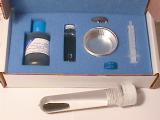
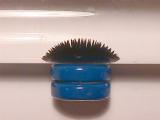
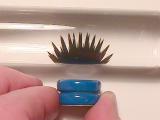
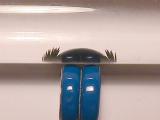
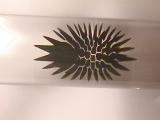
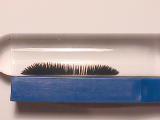
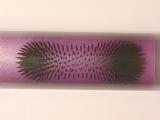
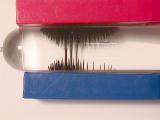
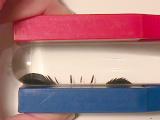
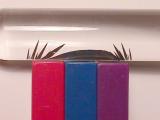
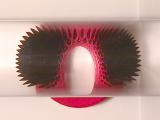
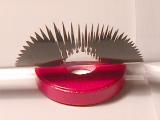
Other Objects ![]()
Try other materials, too, like wood, plastic, carbon, cotton, wool, glass, concrete, leaves, CDs, and so on, which you can find around the house.
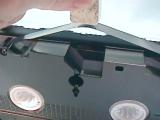
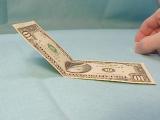

Some things which will be attracted to or stick to a very strong magnet, like a rare-earth magnet, is the tape from a VCR or audio tape, a dollar bill, and the surface of a floppy disk. The reason these items will stick to a magnet is because of the very small particles of iron used in the ink of the dollar bill, and the iron oxide (ferric oxide) used as the recording medium for the VCR and audio tapes and for the floppy disk. (Please only use a tape or disk which you want to destroy!)
Let's try an experiment:
As you can see in the photo above, the
tape from a VCR is attracted to the rare-earth magnet. The magnet will
erase the information contained on that section of the VCR tape. I used a
pencil to hold open the flip-top cover.
How about a dollar bill?
On the other two photos, you can see how the bill is attracted to the
rare-earth magnet.
Take a crisp bill.
Fold it about 55% of the way along its length.
Lay it on a table as shown with the longer portion on the table, the shorter
portion sticking up.
Bring the magnet close to the edge of the bill.
Watch the bill spring toward the magnet.
The reason for the attraction is that the ink on the bill has some iron
particles in it.
To see what effect a magnet has on
floppy disks:
Take a floppy disk and try these things with it. Be sure to
record exactly what you do and your observations - the two most important parts
of an experiment!
Be sure to try some typical refrigerator magnets (usually very weak since they
can barely hold one piece of paper to the fridge door) as well as some stronger
rare-earth magnets (neodymium-iron-boron magnets which can easily hold a stack
of 20 sheets to the fridge).
Also, vary how the magnet approaches the floppy disk and leaves the disk.
For example - directly toward it, perpendicular to the plane of the disk,
or across the face of the disk, in parallel to the plane of the disk.
Perhaps a quick approach and a slow approach could also be compared.
Try the top side and the bottom side of the disk.
Even try moving the magnet around in a circle on the face of the disk.
Maybe even have a floppy held to the fridge by a magnet for a week to see if
time has any affect.
If you can make an AC electromagnet, that would also be a great addition for
comparison.
What kind of data will you put on the disk in order to see if the data has been
corrupted?
Perhaps some bitmap images would work well, with a simple pattern of black and
white squares. They are usually large files so they would cover a large part of
the disk. Also, looking at the image would be a very quick and easy way to
determine if any bits were changed.
Another method would be to have a large data file on the disk, and do a file
compare to the original which is kept on the hard drive.
Want to try something a bit unusual? You know that several cereals
claim to be "iron fortified". How do they do that? By
adding some finely powdered iron (like small iron filings) in with the cereal as
it is being mixed. To see this, simply do the following:
Conclusions
What did you find out? Do you now have a
fairly extensive list of things magnets can and cannot attract?
Check out this information as well:
http://www.eskimo.com/~billb/miscon/miscon4.html#iron
For more information on various minerals, a great source is:
The Audubon Society Field Guide to North American
Rocks and Minerals
ISBN 0-394-50269-8
Another site for obtaining various minerals is:
Problem with 2 or 3 unknown rods
Suppose you are given 2 metal rods: one is a magnet, the other is made of iron. However, both of them are painted so they appear to be the same. Their weight is the same. You are in a room with no windows so you can't tell where North is located. You have no other objects with you. How will you be able to determine which rod is the magnet and which rod is iron?
Suppose you are given 3 metal rods: one is a magnet, one is made of iron, and one is made of brass. However, all of them are painted so they appear to be the same. Their weight is the same. You are in a room with no windows so you can't tell where North is located. You have no other objects with you. How will you be able to determine which rod is the magnet, which rod is iron, and which rod is brass?
Check here for the answer.